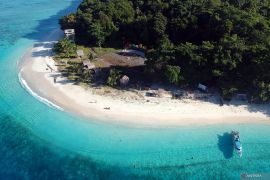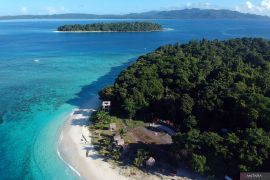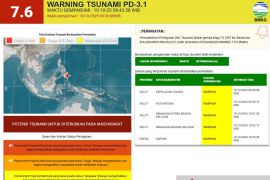The modeling results showed that the earthquake does not potentially trigger a tsunami.Jakarta (ANTARA) - The Meteorology, Climatology, and Geophysics Agency (BMKG) reported that the earthquake that rattled Halmahera Island, North Maluku Province, on Tuesday morning was triggered by a fault within the Maluku Sea Plate.
In a statement received here on Tuesday, Earthquake and Tsunami Mitigation Coordinator at the agency Daryono remarked that the shock was also sensed in Minahasa District and Sangihe Islands District in North Sulawesi Province.
The agency’s analysis found that the earthquake, which hit at 8:44 a.m. Western Indonesia Standard Time (WIB), had an updated magnitude of 5.9.
The epicenter of the earthquake was located at 2.11 degrees north latitude and 126.97 degrees east longitude.
Precisely, it was located at sea, at a distance of 77 kilometers (km) northwest of Loloda Sub-district, West Halmahera District, North Maluku Province, at a depth of 10 km.
"Considering the location of the epicenter and the depth of the hypocenter, it was a shallow earthquake," Daryono remarked.
He stated that the source mechanism analysis showed that the shock had an oblique-thrust fault mechanism.
Related news: Magnitude 6.0 quake strikes West Halmahera
The earthquake was felt in Galela Sub-district, North Halmahera District, North Maluku Province, at Modified Mercalli Intensity (MMI) III-IV, causing several residents to flee the buildings due to the sudden strong tremors.
In Tobelo Sub-district, North Halmahera District, the shocks were sensed at MMI III.
Meanwhile, the earthquake was felt at MMI II-III in Bitung City, North Sulawesi Province. Furthermore, the people in Siau Island, North Sulawesi Province, sensed quite weak shocks of MMI II.
"The modeling results showed that the earthquake does not potentially trigger a tsunami since the magnitude is quite small to be able to create deformation of the seabed that can disrupt the seawater column," Daryono stated.
As of 10:00 a.m. WIB, the BMKG has not monitored any aftershock.
Daryono noted that Maluku Sea is prone to earthquakes and tsunamis.
"There have been several strong earthquakes and tsunamis in the region, including those that occurred in 1608, 1845, 1852, 1857, 1889, 1907, and 1939," he added.
Related news: Over 61 earthquakes hit North Halmahera, Maluku on Jan 8-10
Translator: Devi Ramadhan, Uyu Liman
Editor: Suharto
Copyright © ANTARA 2022












